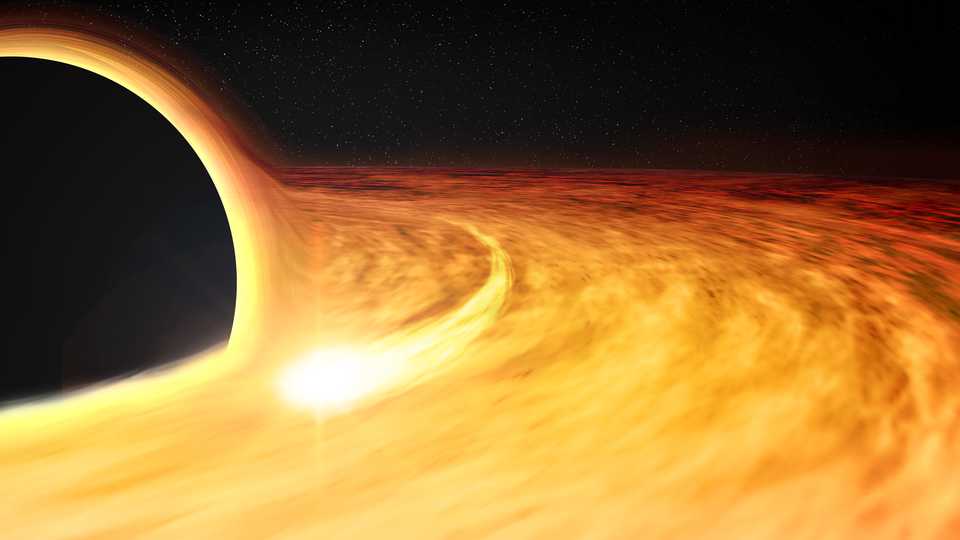Your hub for astronomy news, sky-watching tips, and more from the Morrison Planetarium team.
Science News
Spinning at Half the Speed of Light!

Artist's impression shows hot gas orbiting in a disc around a rapidly-spinning black hole.
Observations of a supermassive black hole devouring a star have shown that it’s spinning at 50 percent the speed of light—or even faster! That means that an object 300 times Earth’s diameter is spinning at least once every two minutes. (Earth of course takes 24 hours to spin once, so for comparison, those of us standing on its surface at the equator travel a mere one-millionth the speed of light.)
The announcement came during the third day of the 233rd Meeting of the American Astronomical Society, taking place this week in Seattle, coincident with the publication of an article in Science magazine.
Astronomers were following up on an event dubbed ASASSN-14li—obscurely named for the All-Sky Automated Survey for SuperNovae (ASASSN), which discovered it more than four years ago. The lead author on the paper, Dheeraj Pasham of the MIT Kavli Institute for Astrophysics and Space Research, described a “flickering” of x-rays that occurred every 131 seconds for more than 450 days.
This kind of behavior is typical of black holes devouring material. The extreme gravity of a supermassive black hole can tear apart a star that wanders too close, heating the material to millions of degrees and emitting intense, high-energy x-rays. The behavior of the system is determined by the mass of black hole, the distance of the material from the black hole—and the spin of the black hole.
Pasham and his team estimated the mass of the black hole based on the size of its home galaxy (we find supermassive black holes in the centers of most sizable galaxies, and the mass of a black hole correlates well with the mass of its host galaxy). They then assumed that the clump of matter getting gobbled up resided at the innermost stable orbit around the black hole (it could be farther out, but not closer, and there’s no way to know its distance for certain).
This leads to the estimate of the black hole spinning at 50 percent the speed of light! (That, just so you know, is fast.) And if the matter lies farther away than the innermost stable orbit? That would mean the black hole is spinning even faster.
Although astronomers have observed many, many supermassive black holes, it’s not clear how they form. They likely grow either through mergers (many black holes colliding to form one supermassive black hole) or through steady accretion (a buildup of the supermassive black hole over time). If many blacks holes merged over time, then their collective spin would likely cancel out, so the high spin rate suggests steady accretion.